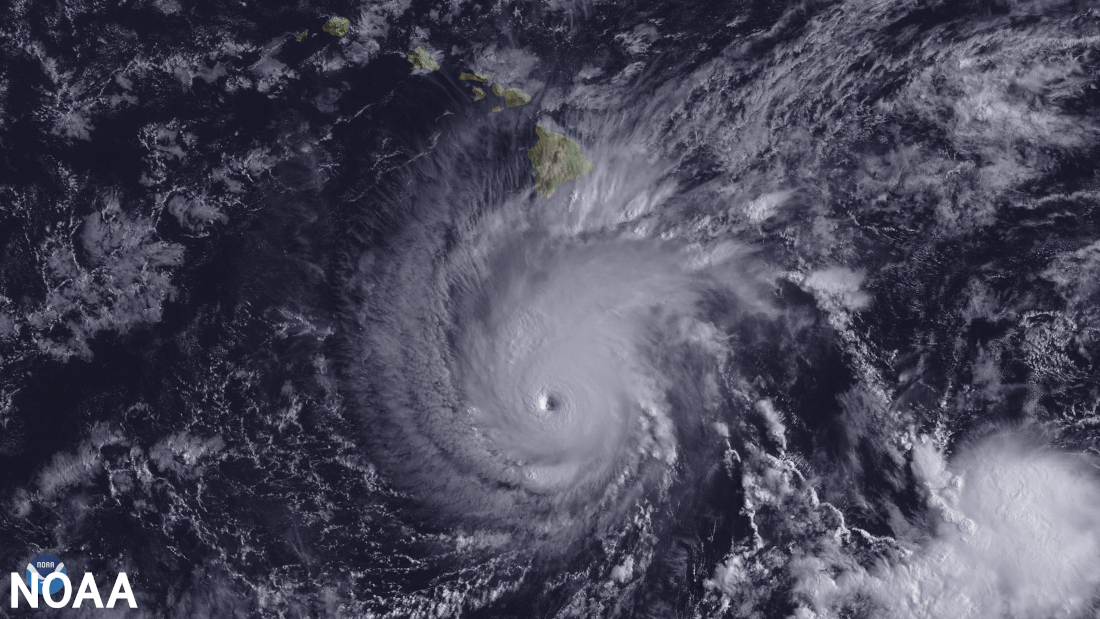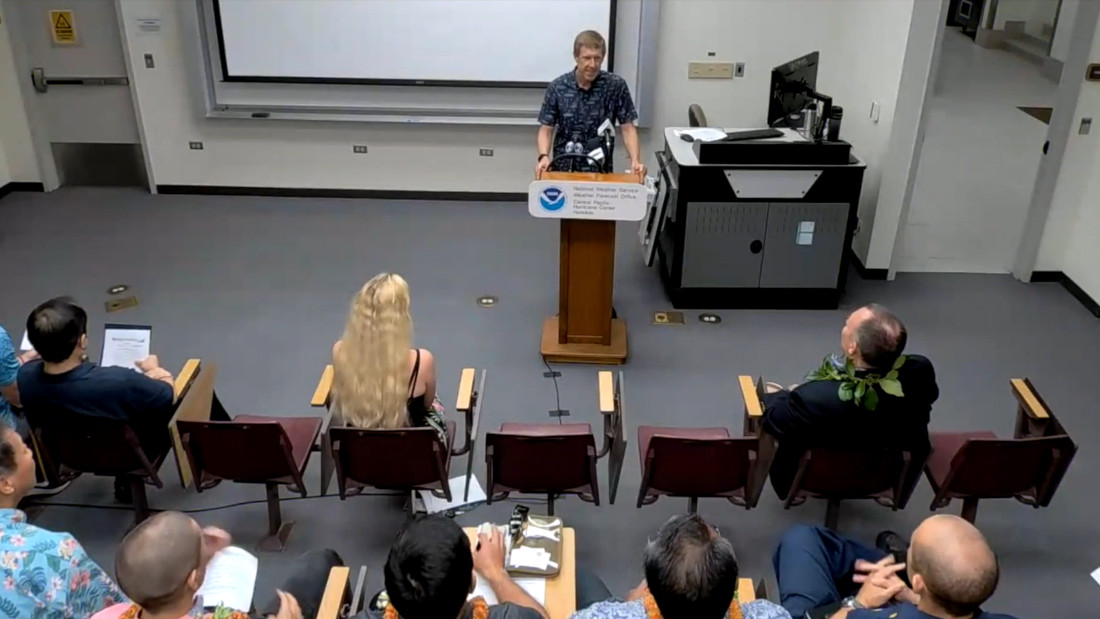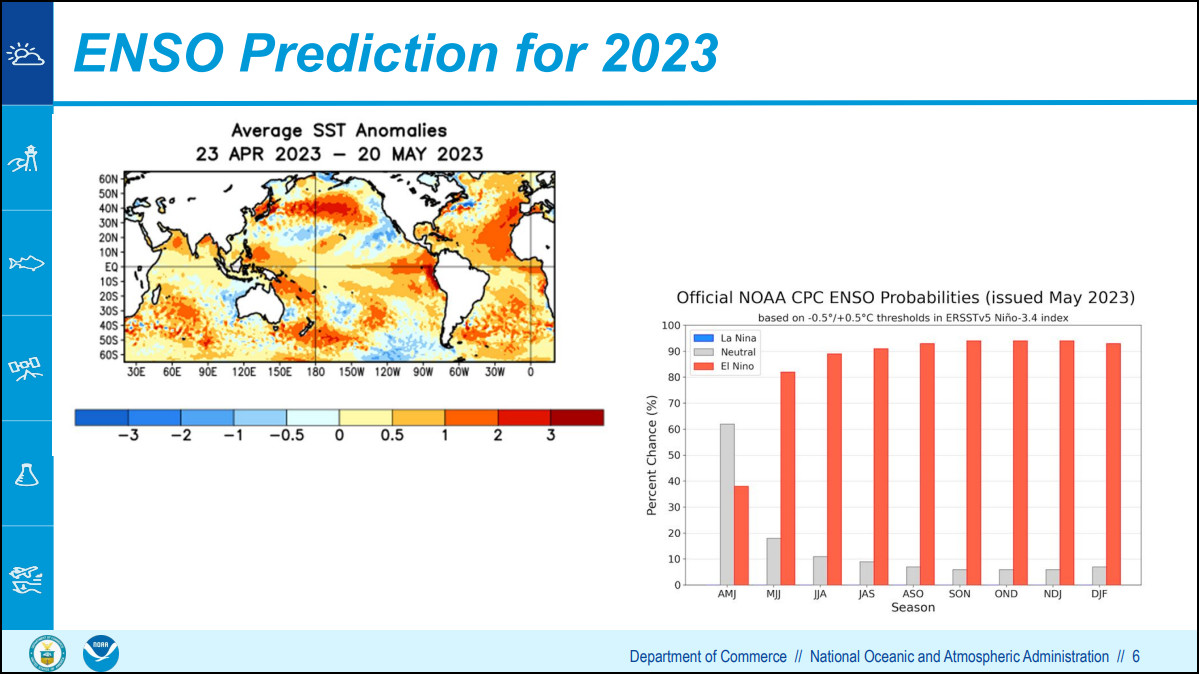This story appears in the above BIVN Update. The video will jump to the associated story when played. (A synthesized voice was utilized in the narration for this story)
(BIVN) – There is a 50% chance of above-normal tropical cyclone activity during the central Pacific hurricane season this year, forecasters say, as the El Niño warming pattern is expected to develop in the Pacific Ocean.
NOAA’s Central Pacific Hurricane Center and NOAA’s Climate Prediction Center, divisions of the National Weather Service, presented the outlook to local media on Thursday. The outlook also predicts a 35% chance for near-normal activity, and a 15% chance of a below-normal hurricane season.
From the NOAA news release:
For the 2023 season, 4 to 7 tropical cyclones are predicted for the central Pacific hurricane region, which is located north of the equator between 140°W and the International Date Line. A near-normal season has 4 or 5 tropical cyclones. Tropical cyclones include tropical depressions, tropical storms and hurricanes.
“Hurricane season in the central Pacific region is expected to be slightly busier this year, compared to a normal season,” said Matthew Rosencrans, NOAA’s lead seasonal hurricane forecaster at the Climate Prediction Center. “A key factor influencing our forecast is the predicted arrival of El Nino this summer, which typically contributes to an increase in tropical cyclone activity across the Pacific Ocean basin.”
The outlook is a general guide to the overall seasonal tropical cyclone activity in the central Pacific basin, and does not predict whether or how many of these systems will affect Hawaii. The central Pacific hurricane season begins June 1 and runs through November 30.
“The last few hurricane seasons have been pretty quiet around Hawaii, luring some folks to let their guard down. Now it’s looking like this season will be more active than the past several years,” said Chris Brenchley, director of NOAA’s Central Pacific Hurricane Center. “It’s more important than ever to review your emergency plan and supply kit now, so you will be prepared for the next hurricane threat.”
The Central Pacific Hurricane Center continuously monitors weather conditions using satellites, land-and ocean-based sensors and aircraft reconnaissance missions operated by NOAA and its partners. These observations are fed into complex computer models that run on NOAA’s supercomputers. Forecasters at the Center use that information to develop storm track and intensity forecasts and provide critical decision support services to emergency managers at the federal, state and county levels.
The news release also touted recent supercomputing and forecast improvements. “This summer, NOAA will increase its supercomputing capacity by 20%, allowing for more detailed, higher-resolution forecast models, advanced physics and improved data assimilation,” NOAA reported. “Once implemented, the computing system will be able to perform 29 quadrillion calculations per second. The expansion will allow for forecast model upgrades for years to come, starting with the Hurricane Analysis and Forecast System.”
The Central Pacific Hurricane Center also plans to extend the forecast range of the Tropical Weather Outlook from five to seven days this season, which will provide emergency managers and communities with more time to prepare for possible storms.




by Big Island Video News4:52 pm
on at
STORY SUMMARY
HONOLULU - On Thursday, NOAA’s Central Pacific Hurricane Center and Climate Prediction Center presented its outlook for the central Pacific hurricane season this year.